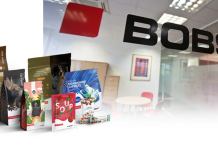For beer drinkers of a certain generation, the idea of beer in cans has traditionally been a fairly unpalatable one. The beer inevitably picked up the taste of the aluminium, and 'canned beer' was often synonymous with 'bad beer'. However, this is decidedly 20th- century thinking — and tasting. This article appears in Africa Print Journal.
The beer world turned upside down in 2002, when Oskar Blues, a Colorado based craft brewery, decided to offer its signature brew, Dale’s Pale Ale, in cans rather than bottles. It was a hit. Advances in aluminium can development have eliminated taste problems, and for beer, cans have many quality advantages over bottles. UV radiation adversely affects the taste and longevity of beer, and cans are completely impervious to light, which still penetrates into dark-tinted bottles. Cans also offer better protection against exposure to oxygen, which contributes to skunking. They also chill faster than bottles.
Additionally, cans are more user friendly. They’re lighter, easier to carry, and far less breakable than bottles, especially for those who like to carry their favourite six pack along on camping, hiking or bicycling trips. They’re safer around pools, and many public pools and parks ban bottles because of potential breakage.
For breweries, cans are cheaper than bottles to buy as well as ship. Bottles also can break during filling, which means the line needs to be shut down, the glass cleaned up, and the area scoured for any stray shards. Cans eliminate this problem.
Then there is sustainability. You can argue whether glass is more sustainable than aluminium, but cans are easier and faster to recycle. So, brewers like cans; consumers, especially Millennials, like cans; and cans are better than they’ve ever been. Whither the bottle?
'If you talk to brewers, they’d prefer to see beer served out of a can because it holds better and it doesn’t get skunked as easily,' said Aaron Kilgore, Tennessee Regional Sales Manager for Resource Label Group, a Franklin, Tennesse based label design and printing provider.
Canned beer sales have been growing dramatically. According to the Brewers Association (www.brewersassociation.org), IRI Group, a provider of 'consumer and shopper intelligence', has found that cans account for 17.1 percent of the current scan sales volume for beer compared to 12.0 percent a year ago (from year-to-date through mid-November 2016). 'A couple of caveats,' cautioned Bart Watson, Chief Economist for the Brewers Association. 'First, IRI ‘craft’ covers numerous brands from the large brewers, so that percentage might be lower if you just looked at small and independent brewers. Second, that's just scan data, so it misses on-premise sales.' Draught sales are about 30 percent of craft production, and bottles 58 percent, so generally cans are closer to 12 percent of overall craft production.
Brewers Association’s benchmarks have seen cans grow about one to two percent a year within the craft segment. 'I’d expect that trend to continue in the medium term,' said Watson. 'Whether we’ll see parity [with bottles] within craft remains to be seen. Cans are 55 percent of overall beer volume, but as a premium segment of the industry, craft may always have more bottles in the mix.'
As cans comprise a larger share of the market, they open up new opportunities — and challenges — for can decorators and printers.
Since Oskar Blues, the canning revolution spawned a whole new business entity: the mobile canning company. This is an itinerant business serving breweries that don’t have canning lines.
The mobile canner will pull up at the brewery with its own equipment, fill the cans, then head off to the next brewery. For small breweries that can’t afford their own canning gear, the mobile canner is practically a godsend.
Whether they have their own canning equipment or rely on mobile canners, breweries still need to decorate the blank cans.
Opening A Can Of Worms
At present, there are three basic ways to decorate a beer can:
• Direct-to-can.
• Label.
• Shrink sleeve.
Direct-to-can printing is typically done by the can manufacturer, a company like Ball or Rexam. They use a lithographic process that images directly on the aluminium. Like most analogue printing processes, this is geared toward very long runs — think of Budweiser that ships millions of cans. For smaller breweries, whose production is a fraction of that — 20,000 or 30,000 is typical for a craft beer run — that’s an impractical solution. Even though the can manufacturers don’t charge extra for printing, there is still the need to warehouse exponentially more printed cans than they’ll need.
When a brewery, or any beverage maker, needs cans, it has to buy them by the truckload, which is about 200,000 cans. Empty, topless aluminium cans can be easily crushed, so they can’t be sent via regular freight. They’re instead carefully shipped in trucks to customers. So while breweries will need the blank cans, or brites, 200,000 preprinted cans is a tall order.
'If you’re a craft brewery, you may sell 200,000 of your topline IPA in a year, but some of the other brews may only sell 10,000 or 20,000 in a year,' said Kilgore. 'A truckload of cans is a hurdle.'
For smaller runs, there are two decorating solutions: pressure-sensitive labels and shrink sleeves. Many companies specialise in long- and short-run beer can label and shrink sleeve printing, using a mix of analogue and digital technologies. However, digital direct-to-can printing is starting to emerge, and may be ready for prime time in the very near future.
Labelled With Love
'We’re seeing more and more interest in can sleeving and labelling,' said Robert Drumm, President of Atlas Labels & Packaging, a Kansas City, Kansas, distributor of labels and other packaging materials for beverage industry segments. 'Customers look at the cost of the two applications, and while most would prefer to use sleeves, the cost of the application equipment and the sleeves leads many of them to decide to use labels.'
Short-run labels and sleeves are run digitally, and as runs get longer, a traditional flexographic process is the more cost-effective solution. What exactly qualifies as short run? Opinions vary, but generally 15,000 to 20,000 is considered 'short run' in the craft brewing world. There is some degree of versioning, however. 'A brewer may be running 15,000 to 20,000 cans, but they’re running four to six different styles [pale ale vs. amber ale, e.g.], and there are copy changes within that run,' said Drumm.
Resource Label Group has developed a labelling system specifically for small and craft breweries called Brew Wrap, a seamless full-can label that offers all the benefits of a shrink sleeve but less expensively. Brew Wrap is applied from a roll onto filled cans, not empties, and the advantage of this is they only label what’s been filled. If a production run comes up short, the brewery doesn’t have to warehouse any extraneously labelled cans.
Brew Wrap is printed by UV flexo, HP Indigo or inkjet, with the run length largely determining the printing technology. Other factors can include special effects and other design elements. 'Some customers want to add some screen printing on their labels, or a texture or a foil,' said Kilgore. 'They get creative and decorative.'
Although having the entire can printed by the can manufacturer is prohibitive, brewers will sometimes have just the neck of the can — the area that tapers from the main body up to the lip, printed with something generic, like the name and/or logo of the brewery. Then they’ll design the Brew Wrap to blend seamlessly with the neck graphics. That way, all their cans are consistent with general brewery branding, but individual short runs can be customised for a particular beer.
Brew Wrap can also support very short runs. 'If someone came to us and said they’re having a special event and wanted 100 cans with a special design, we could do that,' said Kilgore.
Brewers use creatively designed can graphics to get the most out of a combination of preprinted cans and labels. 'They’ll order a full truckload of a preprinted can, their flagship IPA, and they’ve designed the cans so they can label over the body of the can when they’re filling it with a different style,' said Drumm. 'It looks natural, and you have to look at the can closely to detect that it’s an IPA can with an amber ale label over it. That’s a cost-effective way of handling a short run of cans.'
Yes, We Can!
Like elsewhere in the packaging world, labels are great, but the Holy Grail for many brands and packagers is direct-to-print. Obviously, direct-to-can printing is possible, but what about at the craft brewery level?
Digital direct-to-can solutions are starting to emerge. 'They exist, but they’re expensive, and you don’t often see them in the market,' said Drumm. 'I suspect in the next three to five years that will change, but that technology is still bleeding edge.'
One company on the bleeding edge is Tonejet, based outside Cambridge, England. Originally a manufacturer of nozzle-less print heads, the company decided to develop its own direct-to-can printing solution. 'It’s an electrostatic technology, and works very well with a metal substrate where you can control the charge,' said Marvin Foreman, Sales Manager for Tonejet Limited.
The Tonejet process uses a liquid toner that consists of a charged pigment particle suspended in a mineral oil-based vehicle. As it’s jetted onto the metal, the fluid vehicle evaporates very quickly, depositing the pigment on the oppositely charged substrate. Much like an electrostatic printer needs to fix the toner to paper, the Tonejet process requires an overvarnish to secure the image on the can. The Tonejet system uses a beverage industry standard overvarnish, so it meets all regulations for beverage cans. A pass through an oven cures the overvarnish. Being digital, it’s optimal for short-run printing — even down to can-of-one, should demand arise.
'We’ve had a lot of interest from people who have noticed that there is a gap in the supply chain,' said Foreman, 'and a lot of interest from some of the current suppliers of labels and shrink sleeves to the craft beer industry.' It prints 60 cans an hour, so it’s not intended to compete with the long-run direct-to-can processes offered by can manufacturers that print up to 200 cans an hour, but it can hit the 'sweet spot' of a craft brewery’s run.
'Craft beer is anywhere from 20,000 cans per run to at most 70,000 or 80,000,' said Foreman. 'Some are looking to offer smaller, personalised runs for corporate events, weddings, birthdays, marketing samples or test runs. I’ve seen everything from 10 up to 80,000 cans. I think the sweet spot [for the Tonejet unit] is going to be around 30,000 to 40,000, which is a common quantity for the craft beer industry.'
Tonejet is finessing the technology as well as integrating ancillary systems, such as a can palletiser/depalletiser and a drying oven for the overvarnish. These systems are all being built to spec to minimise the footprint, as well as ensure the optimal curing time and other performance aspects. 'Our goal is to start meeting with interested parties and customers in the early part of the summer,' said Foreman, 'when we can fully demonstrate the capabilities of the machine.'
A Full Bar Menu
Whether it be labelling, sleeving, or even litho or digital direct-to-can, beer isn’t the only beverage that’s been experiencing a craft movement. 'Ciders and soft drinks are others,' said Kilgore. 'Companies like Angry Orchard have started becoming prevalent.'
'We’ve had some conversations with soda manufacturers,' said Foreman. 'A few smaller companies are bringing out their own craft sodas. There are also energy drinks. Another potentially big player is coffee served in Red Bull®-style cans, which seems to be gaining momentum.'
'There are producers of juice drinks,' said Drumm, 'and there are quite a few people who are putting wine and premixed cocktails into cans.'
Wait — wine? In cans? If you thought there was a stigma attached to drinking beer out of a can, that’s nothing compared to wine. In terms of quality, a can may very well be better than a bottle, but appearance counts for a lot in the boudoir of the grape. Picture it now: an intimate dinner for two in a candlelit restaurant, and the waiter cracks open a can of cabernet. Who says romance is dead?
Vin de boite won’t catch on with everyone, but the airline industry is particularly partial to canned wine for weight reduction reasons.
Spin The Bottle
Two trends are driving an interest in beer can decorating in general, and digital short-run decorating in particular. The first is the explosion in craft brewing. According to the Brewers Association, in 2015, the number of breweries in the US alone grew by 15 percent, rising to 4269 breweries, 'the most at any time in American history,' said the association in a March 2016 press release.
Then there is the 'can revolution'. 'The stigma of beer in cans is all but gone, at least among consumers in their 20s, 30s, and early 40s,' said Drumm. 'If I had a crystal ball, I’d say that we are likely to reach an equilibrium between cans and bottles in the next year or two.
'You have better beer coming out of cans and you can sell it in more places,' said Kilgore. 'There are just a lot of benefits to cans over bottles. We’re really seeing the trend of that direction.'
It’s not just an American phenomenon. 'Five mobile canning companies have been set up in the UK within the last two years,' said Foreman. 'The UK is catching on, and I’m now getting calls from Italy, Bulgaria and elsewhere in Europe, as well as South America, South Africa and New Zealand. It’s a trend that clearly we haven’t reached the pinnacle of yet.' Let’s drink to that.
Richard Romano has been writing about the graphic communications industry for more than 20 years, and has covered wide-format printing since 1998. He is a senior analyst for news and information portal WhatTheyThink.com, where he is the section editor for the Wide Format page. He also contributes to Wide Format & Signage and Printing News magazines. His most recent book is a collection of historical essays called Printing Links: History, Science, Technology and the Graphic Arts, defiantly available in print only at Amazon.com.
This article first appeared in the SGIA Journal and is reprinted with permissions from the Specialty Graphic Imaging Association.





















